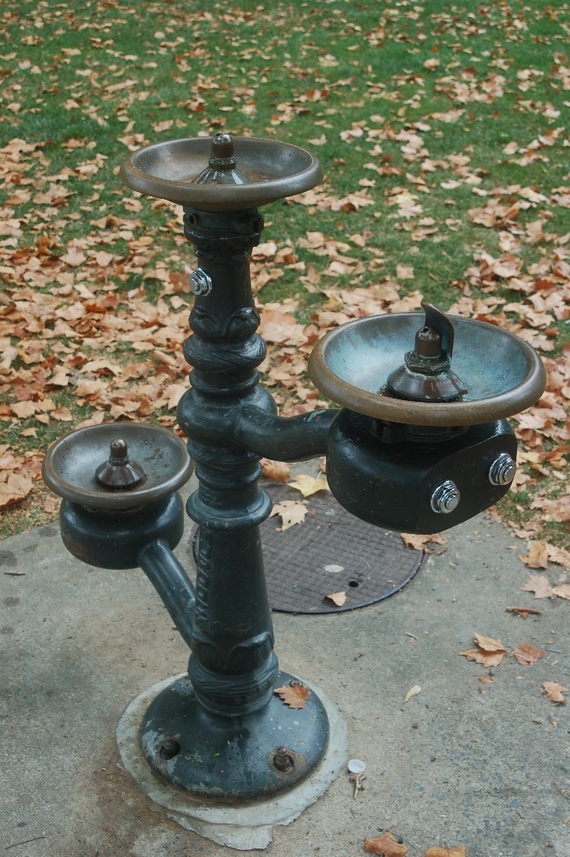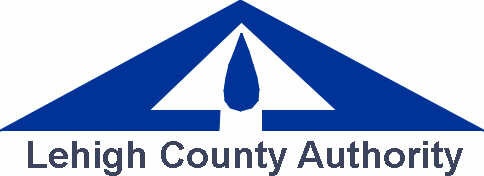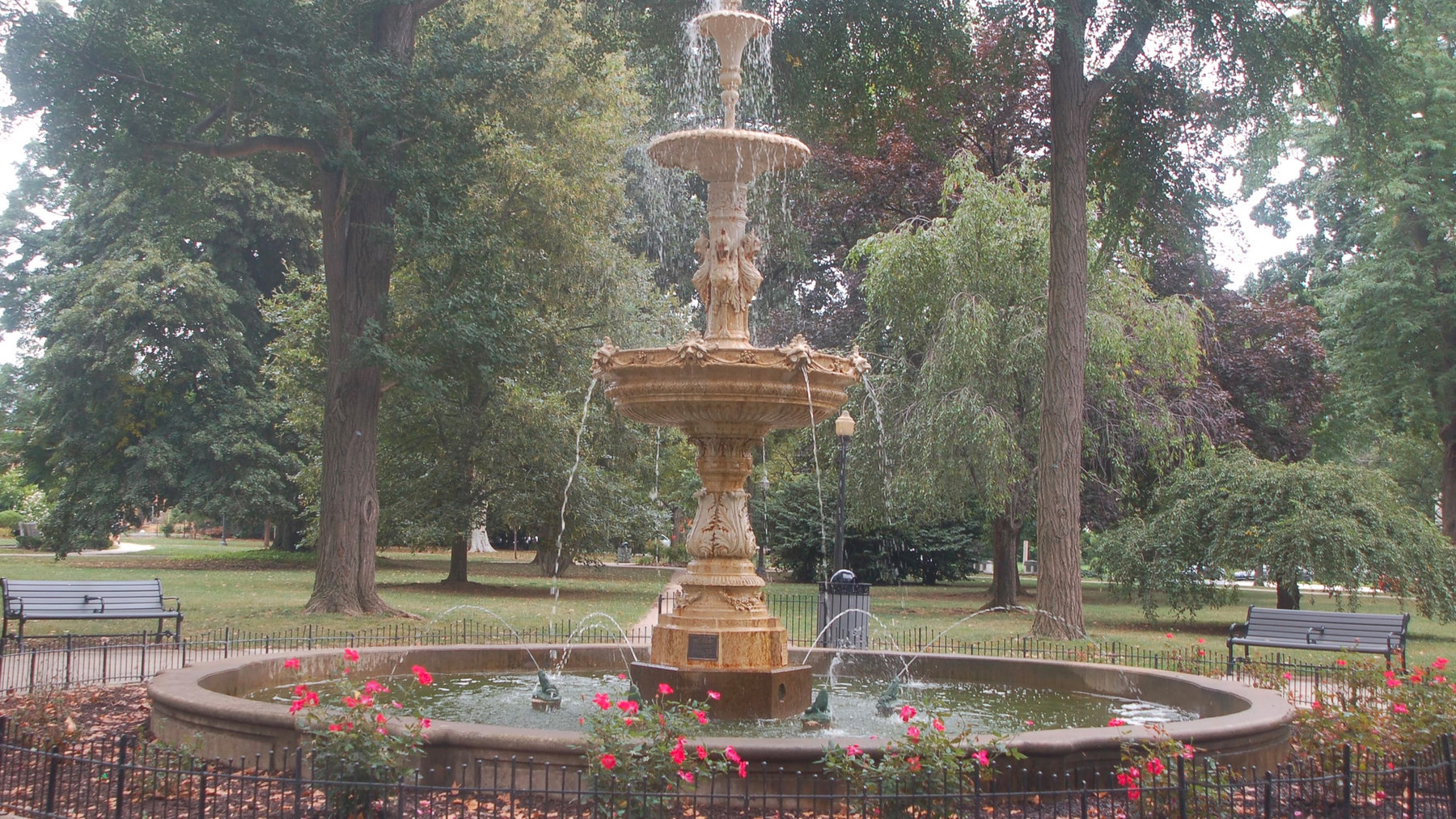As struggling Detroit looks to fund its pension obligations, officials there are considering using valuable paintings (Picassos, Van Goghs, etc.) from the collection of the Detroit Institute of Art as collateral. Nice surety, if you’ve got it.
What if you’re running a much smaller city that doesn’t have a world-class art museum with treasures you can put up as a guarantee? Simply up the creek without a paddle? Maybe, maybe not.
As struggling Detroit looks to fund its pension obligations, officials there are considering using valuable paintings (Picassos, Van Goghs, etc.) from the collection of the Detroit Institute of Art as collateral. Nice surety, if you’ve got it.
What if you’re running a much smaller city that doesn’t have a world-class art museum with treasures you can put up as a guarantee? Simply up the creek without a paddle? Maybe, maybe not.
As a reminder, just 10 days ago Allentown entered what it hopes will be the first stage of a dramatic revival of its downtown, which had been thriving a generation ago but then withered as suburban malls drew away shoppers and dollars. The money for the city’s new reconstruction effort came from an inventive and practically unique tax-recycling deal, which I previously described here.

But apart from building anything new, the city also had to figure out how to cope with a legacy familiar to, especially, older cities: covering the costs of very generous, or at least very expensive, public pensions.
The city’s pension crisis worsened for reasons too far afield to go into here. But when ultimately faced with a $158 million (and growing) pension-fund liability that would gradually cripple the already financially strapped city (eventually consuming more than 30 percent of the city’s annual general fund), Allentown officials explored ways of monetizing city assets.
They considered selling off or leasing city golf courses or municipal parking lots and garages (as Harrisburg and Reading have done). But neither of those plans would bring in the kind of money Allentown needed to deal with its pension liability. So, they turned their attention to another fairly unusual solution: leasing out the city’s water and sewer system. After months of financial modeling and study, in 2012 the city finally started the process that would lead to bids on a lease agreement.
Conceptually, this is similar to the arrangements under which Chicago in 2008 leased out the rights to its parking meters, and in which other cities have gotten private companies to make a big payment up front for the right to receive fees for a given number of years into the future.
On April 25, 2013, the Allentown City Council met to vote on a proposal to authorize Mayor Ed Pawlowski to sign a 50-year lease of the city’s water and sewer system to Lehigh County Authority (LCA), a public water and wastewater utility then already operating 13 municipal water systems in the area. The lease would give the city a big upfront payment of more than $210 million and a steady revenue stream into the future.
The Council chambers were full of observers that April night. People lined up out the door of the auditorium, waiting to speak, many of them in support of the measure. Vocal and angry objectors raised issues relating to the transparency of the bidding process and the city’s negotiations over the lease. Described by a local reporter as contentious and chaotic, with plenty of jeering and yelling, the meeting finally ended after midnight when the city council voted six to one to authorize the lease.
The strongest argument against the deal was that it ultimately would lead to skyrocketing water bills. As appealing as the upfront payment might seem, critics said, it is essentially “a costly loan that households and local businesses will repay through their water bills for decades.” (For more on this argument, see here and here. And here is a comprehensive case for why, as these opponents put it, “water privatization is a false solution for municipal budget shortfalls.”)

Last month, as the city was still waiting for the debut of its new downtown arena, Deb and James Fallows and I talked with City Council President Julio Guridy early on a Saturday morning in his office downtown. He said of the whole process, “It was contentious but the majority of people knew it was the right thing to do for the city. We got $211 million from the deal.” And that’s not all. In addition to that upfront payment, LCA will also give the city $500,000 annually, adjusted for inflation, starting in 2016.
Although the process of getting approval for the lease may have been rocky, things seem to have gone remarkably smoothly since then. In August, I spoke with Liesel Adam, the LCA’s chief administrative officer, to get the LCA perspective on the transition.
Adam says the deal between the city and LCA had many natural advantages that made the public water authority a much better fit for the lease arrangement than private companies that bid for it. For one thing, the fact that LCA is a public authority and not a private company also went far in reducing city employees’ objections to the lease and smoothed the transition. According to Adam, “The key thing that made LCA a better choice [than other bidders for the lease] is the fact that we’re a public entity with the same benefit structure and the same benefit plan [that the city employees have]. So, all the city employees who came over to LCA saw no change at all in their benefits and they were able to port their pensions with no problems,” Adam told me. And that’s a big deal. None of that would have been possible if a different bidder had won.
“The city had 101 employees in their [water and sewer] operation. Seventy-six of those 101 came over to work for us after the deal closed. Most of the 25 employees who stayed with the city did so to fulfill certain continuing city responsibilities that weren’t part of the water/sewer operation,” Adam said. Those responsibilities include things like storm-water management and managing the city’s swimming pools.

The potential impact on rates also has been a concern to some, especially existing customers in the LCA’s 13 other areas of service, who looked at the addition of Allentown’s aging water infrastructure as a costly liability. But the fact that the LCA is a public authority and not a private company helped to mitigate those concerns, according to Adam, who says the LCA isn’t in a position to gouge its other customers, even if it wanted to. “We’re a public authority, and as such we have to follow the rate-setting rules laid out in Pennsylvania’s Municipal Authorities Act. So, the rates we charge our customers are based on the cost of service.”
The lease agreement freezes rates until next year, 2015. Then, from 2016 to 2032, the maximum annual rate hike is inflation plus 2.5 percentage points. After that, the maximum rate hike is inflation plus two percentage points. That’s less than the average annual rate hike over the past 40 years (about 5.6 percent a year).
Climate-change experts say water resources will be one of our most worrisome problems in coming decades. Would that mean that Allentown has made a bad deal? Or perhaps the LCA has, by locking in rates 50 years into the future, based on today’s water circumstances. I asked Adam how confident the LCA is that the future rate increases negotiated as part of the lease will be adequate to cover costs. She told me, “We did lots of financial modeling about what our rate structure will look like under various scenarios, so from that standpoint we have confidence about our revenue stream going forward. It’s true that there are unknowns, chief among them (1) climate change and (2) regulatory change (for example, there might be a change in water-treatment standards). So, there are some protections built into the concession agreement that would allow us to recover costs.”

I asked for an assessment of how the deal has worked out overall. Adam said, “It was a very smooth transition. We just hit our one-year anniversary [of taking on the Allentown system] and we’re very pleased with how it’s going. We’ve managed to outperform our predictions having to do with efficiencies, economies of scale, and the like.”
City officials are similarly delighted because the deal has allowed Allentown to avoid financial collapse and helped put it on a more stable fiscal footing. Even bond raters give the deal high marks. Bond Buyer named the water lease co-winner of its “Deal of the Year Award.” The other co-winner, remarkably, was Allentown’s sale of $224.4 million in bonds to finance construction in the city’s central business district, part of the Neighborhood Improvement Zone, which I examined here earlier.
We won’t know for years what this deal, which shifts the cost of water and sewer service from being a taxpayer obligation to being a ratepayer obligation, ultimately will mean for ratepayers in Allentown. It could be a disaster. For now, though, the city government of Allentown has found a way to avoid a financial calamity. And that counts for something.
In the coming days, we’ll be looking at various other signs of life sprouting in this city, for so long beaten down. Next up: Deb Fallows will show you what a Triple-A baseball game is like at Allentown’s Coca-Cola Park, the stadium that’s home to the Iron Pigs.




